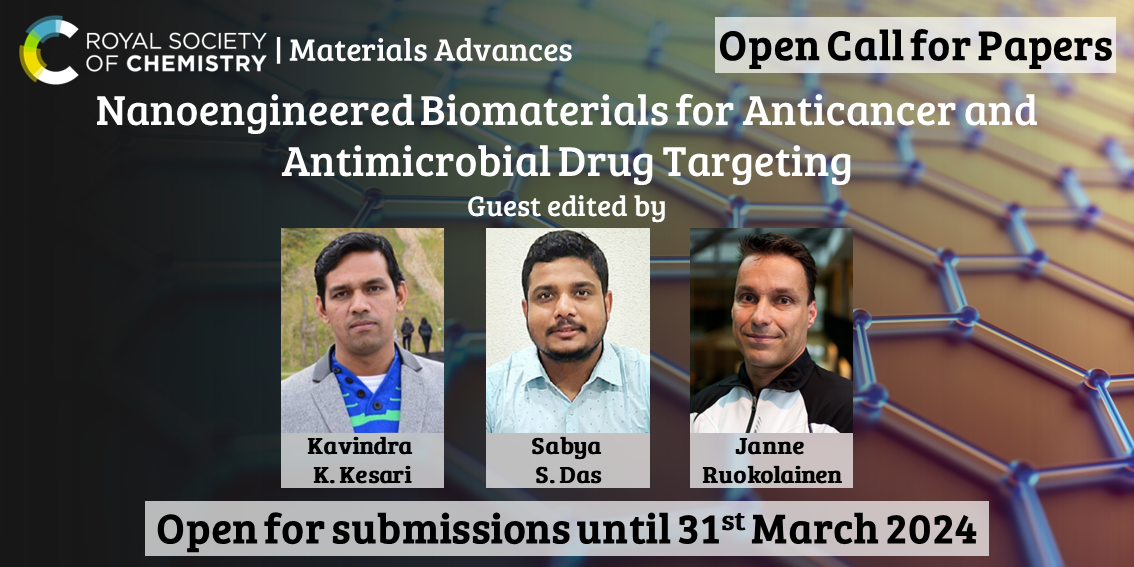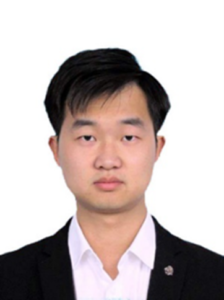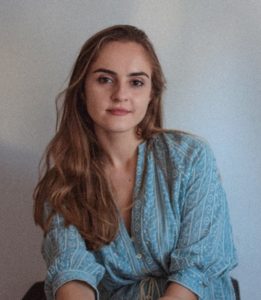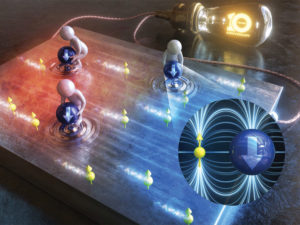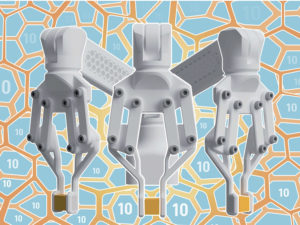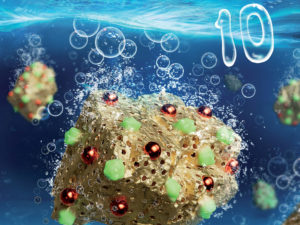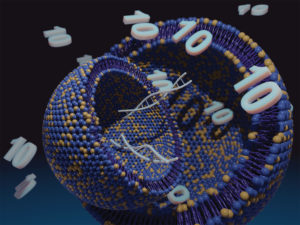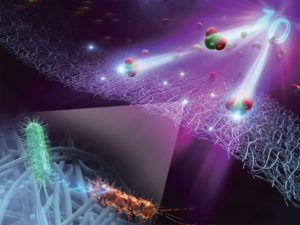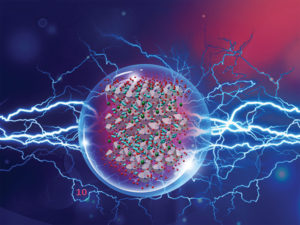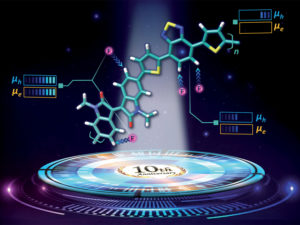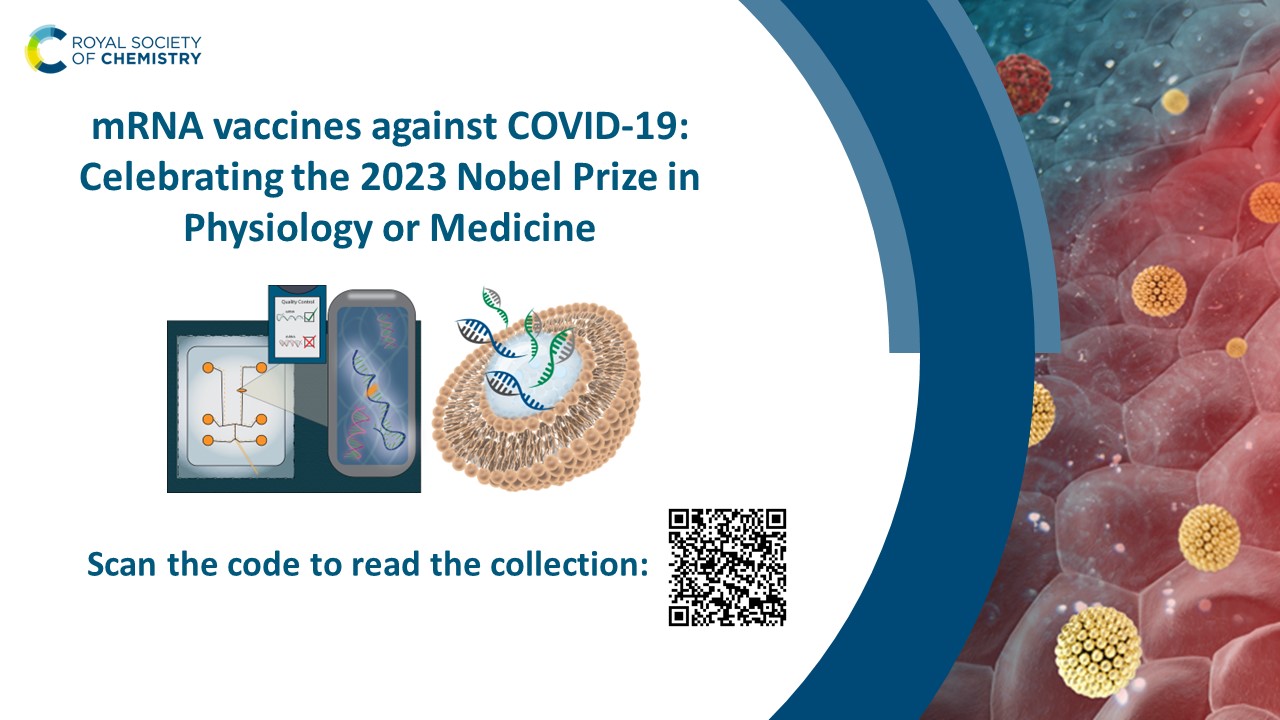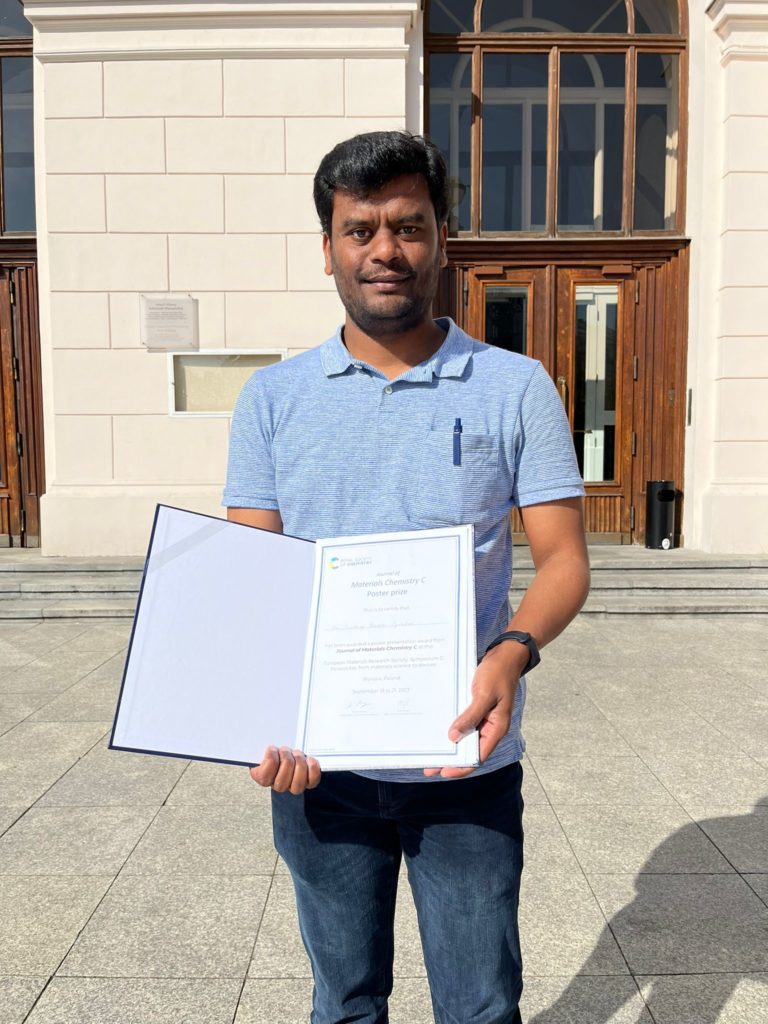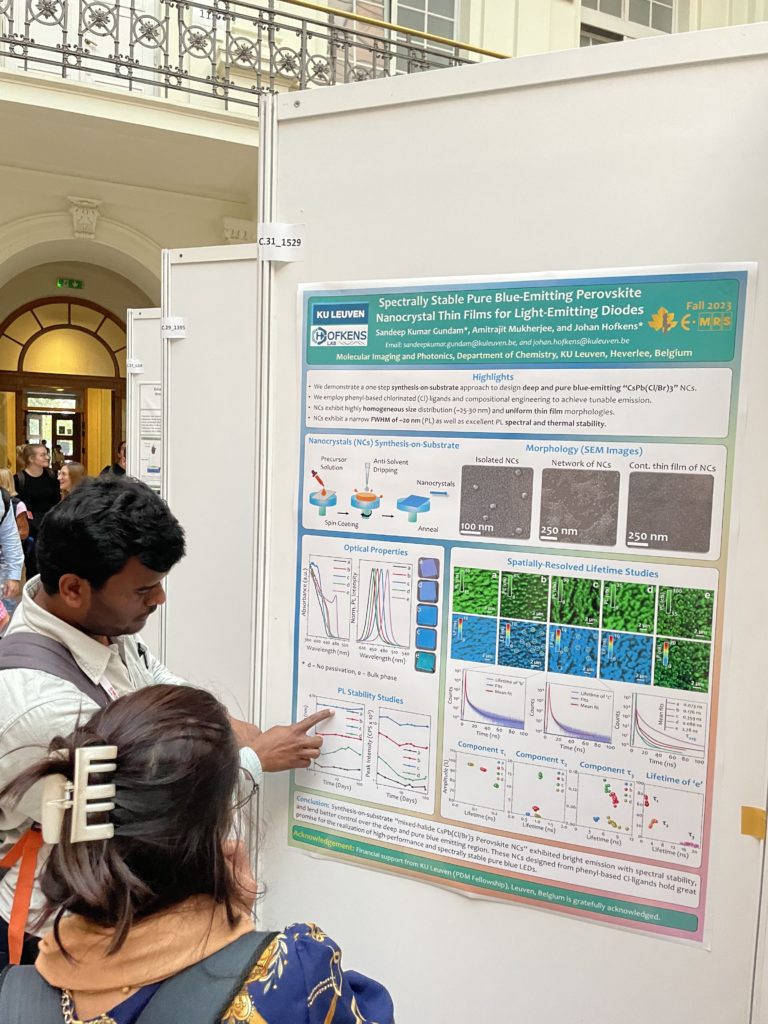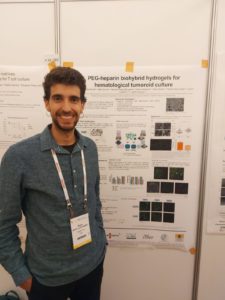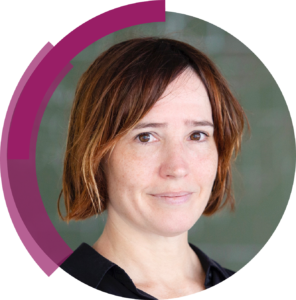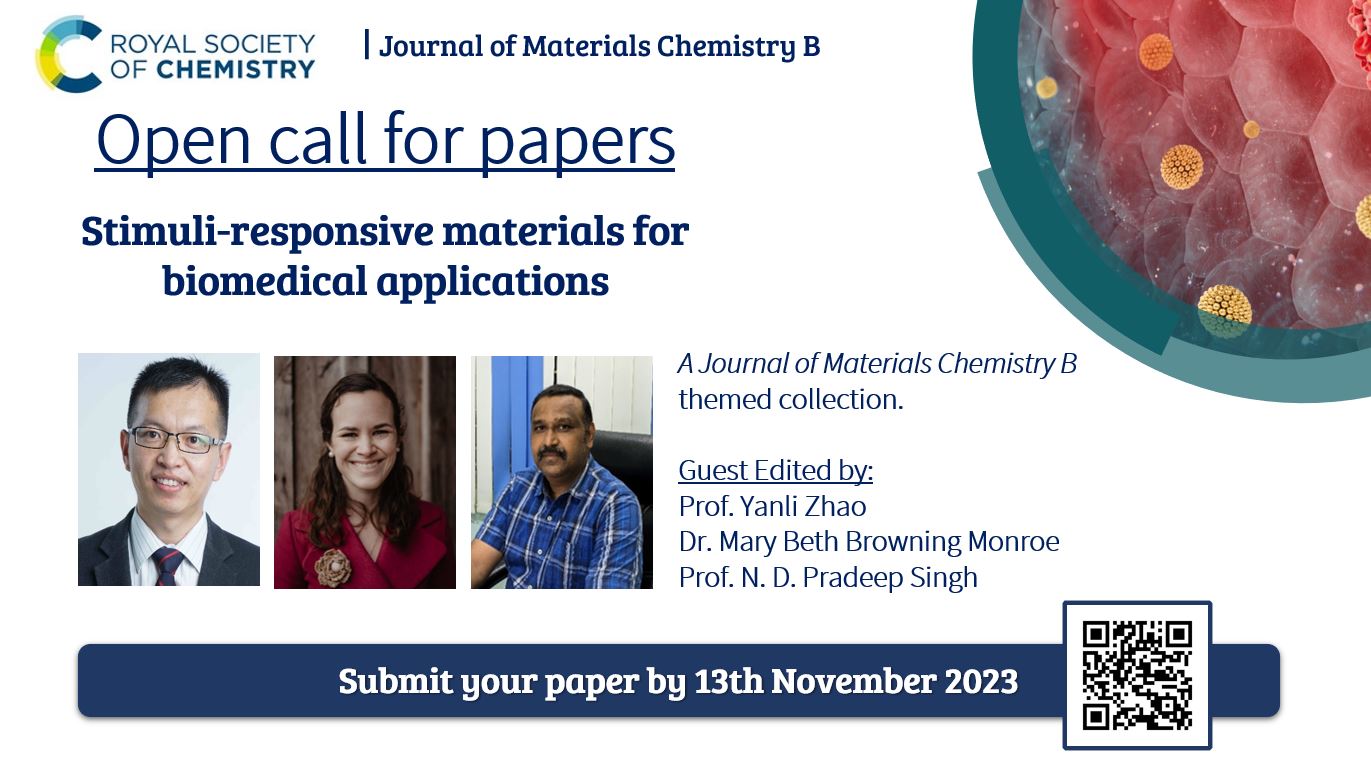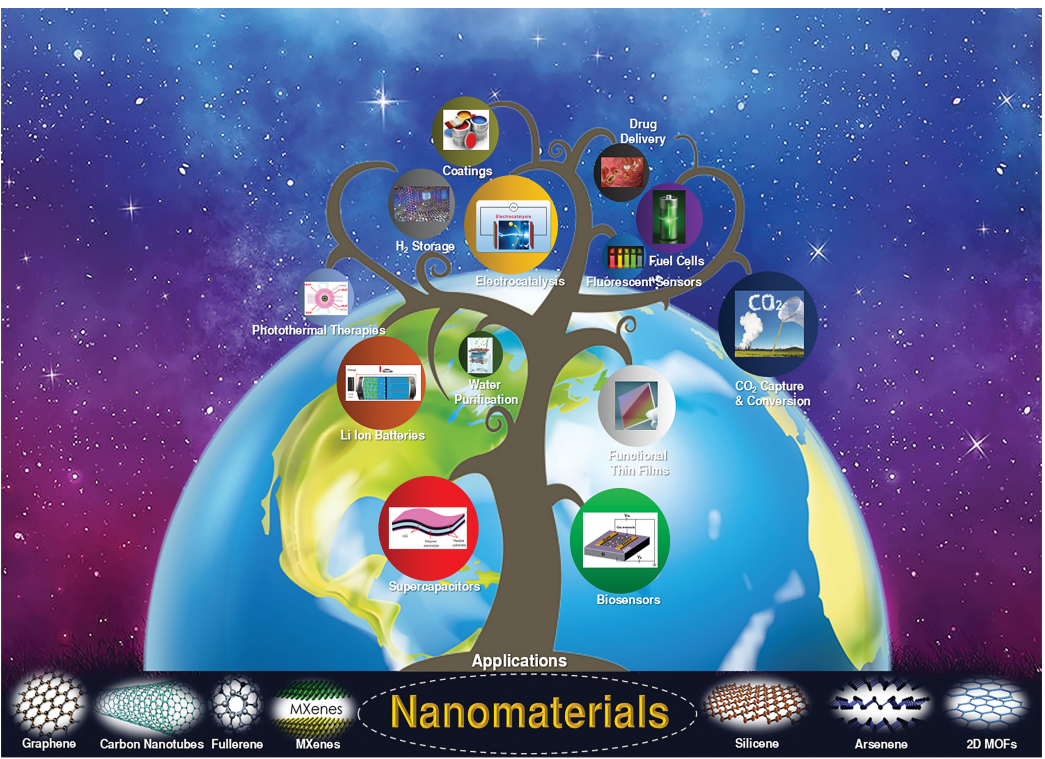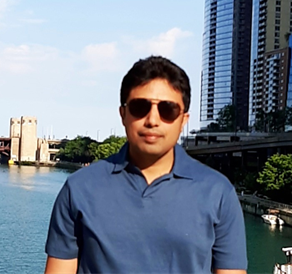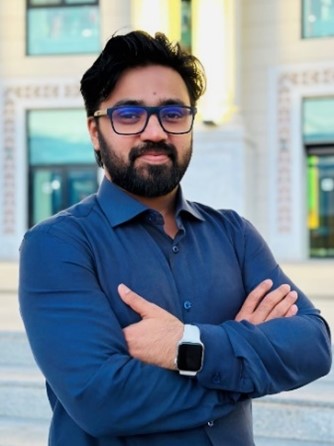This year we are pleased to celebrate 10 years since Journal of Materials Chemistry was split into three respective journals: Journal of Materials Chemistry A, B and C, each focusing on a different aspect of materials chemistry. We are grateful to our fantastic community of authors, reviewers, Board members and readers and wanted to showcase just some of them in a series of ‘Community Spotlight’ blog articles.
Next in our ‘Community Spotlight’ series, we feature some more of our wonderful Editorial Board members who have supported Journal of Materials Chemistry A, B or C over the years through guiding the growth and development of the journal and/or actively handling papers in their Associate Editor roles. Check out their interview responses below to find out what they like about being on the Editorial Board and how they think the field of materials chemistry will develop in the next 10 years.
Professor Dan Li

Dan Li is an Associate Editor of Journal of Materials Chemistry A and Materials Advances. He is currently a Professor and the Dean of College of Chemistry and Materials Science, Jinan University, and the Director of Guangdong Provincial Key Laboratory of Functional Supramolecular Coordination Materials and Applications. He received his B. Sc. from Sun Yat-Sen University in 1984 and then worked at Shantou University. He pursued his Ph. D. at The University of Hong Kong with Professor Chi-Ming Che during 1988–1993. Then he returned to Shantou University and became Professor in 2001. He moved to Jinan University in Guangzhou in 2016. His research interest focuses the design and fabrication of supramolecular coordination assemblies and their functions based on photoluminescence, porosity, chirality and energy storage. He has authored and co-authored more than 300 papers in peer-reviewed journals, including Nature, J. Am. Chem. Soc, Angew. Chem. Int. Ed. and J. Mater. Chem. A. He was a recipient of the National Science Found for Distinguished Young Scholars of China in 2008, Fellow of The Royal Society of Chemistry (FRSC) in 2014, Ding Ying Science & Technology Award in 2019 and Guohua Outstanding Scholar of Jinan University in 2022. |
Where do you see the materials chemistry field in the next 10 years?
I would like to see that more and more new materials with diverse functions are developed for a better life and friendly environment. Innovations from Chemistry, Materials Science, Engineering and Artificial Intelligence will help to speed-up materials design, to optimize reaction processes and to create a more sustainable world.
Could you provide a brief summary of your most recent Journal of Materials Chemistry A publication?
In our recent paper (J. Mater. Chem. A, 2023, 11, 12777–12783; DOI: 10.1039/d2ta08797a), we combine the chemistry of MOFs and COFs to successfully fabricate two Cu(I) cyclic trinuclear unit (Cu-CTU)-based covalent metal–organic frameworks (CMOFs) with similar two-dimensional structures. With a strategy of the steric modification of metal nodes, the resulting MOFs show differences in crystallinity, porosity, chemical stability and catalytic activity for hydroboration reactions. The development of advanced CTU-based CMOFs provides new opportunities for designing heterogeneous catalysts and paves a new way to rationally tune the catalytic performance of MOFs.
Professor Yusuke Yamauchi
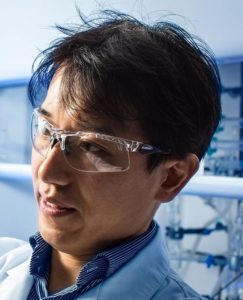
Professor Yusuke Yamauchi received his Bachelor degree (2003), Master degree (2004), and Ph.D. (2007) from Waseda University (Japan). After receiving his Ph.D., he joined the National Institute of Materials Science (NIMS) (Japan) to start his own research group. In 2016, he joined the University of Wollongong as a Full Professor. In 2017, he moved to the University of Queensland (UQ). Presently, he is a senior group leader and an ARC Laureate Fellow at AIBN and a full professor at School of Chem. Eng. in UQ. Professor Yamauchi is an Associate Editor of J. Mater. Chem. A and Chem. Eng. J. (Elsevier). He has published ~950 papers with >77,000 citations (h-index of 140) in the field of inorganic materials chemistry and inorganic synthetic chemistry. He has been recognized as Highly Cited Researchers in Chemistry (2016-2022) and Materials Science (2020-2022). |
Where do you see the materials chemistry field in the next 10 years?
The preparation of nanomaterials in the past decade has relied on trial-and-error approaches. In particular, for complex alloys, such as multimetallic or high entropy alloys where multiple elements are present in the system, the tuning of the synthesis and properties can be time consuming and costly as it would require hundreds or thousands of experiments to tune/optimize the ratio of the composing elements. In the next 10 years, I predict that artificial intelligence-driven machine learning would play a tremendous role in reducing the number of experiments required for tuning the properties and performance of complex nanomaterials.
As an Associate Editor, do you have any top tips for authors preparing their manuscript?
My tips for preparing manuscripts are:
- Identify early the points that you want to discuss in the paper (i.e., make a strong and compelling story)
- Prepare a strong abstract by highlighting how your work is novel compared to other studies published in the literature and by pointing out the main findings of the work.
- Read your papers multiple times to avoid careless typos and spelling.
- Have all the co-authors read and comment on your draft.
- Ensure that all your figures are readable and attractive to the readers.
- Ensure that you are not simply describing your results but also explain the reasons behind your observations
- Ensure that all figures (including Supporting Information figures) are cited and discussed in the text.
- Summarize only the most important findings in the Conclusions
Professor Oana Jurchescu
|
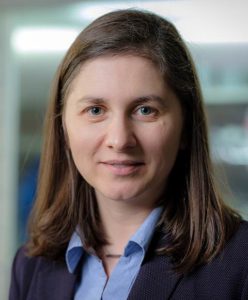
Oana D. Jurchescu is a Baker Professor of Physics at Wake Forest University in Winston-Salem, NC, USA and a fellow of the Royal Society of Chemistry. She received her PhD in 2006 from University of Groningen, the Netherlands, and then was a postdoctoral researcher at the National Institute of Standards and Technology in Gaithersburg, MD. Her expertise is in charge transport in organic and organic/inorganic hybrid semiconductors, device physics and semiconductor processing. She is the recipient of several awards, including the CAREER award from the National Science Foundation, NSF (2013), the NSF special creativity award (2022), the Pegram Award from American Physical Society Southeastern Section for excellence in teaching and mentoring (2022) and several university awards. She is an Associate Editor for Journal of Materials Chemistry C since 2019 and serves as a member of the Advisory Board of Chemical Physics Reviews, Organic Electronics, and J. Phys Materials. |
What do you think of Journal of Materials Chemistry C as a place to publish impactful materials chemistry research?
Journal of Materials Chemistry C covers a wide range of topics in chemistry, physics, materials science, and engineering. This diversity of scope attracts a diverse readership of scientists from different backgrounds and with different perspectives. This exposure to a variety of viewpoints helps to ensure that the published work is of high quality and has a significant impact on the field.
Could you provide a brief summary of your most recent Journal of Materials Chemistry C publication?
In our manuscript “Charge carrier traps in organic semiconductors: a review on the underlying physics and impact on electronic devices” H. F. Haneef, A. M. Zeidell, O. D Jurchescu, J. Mater. Chem C 8, 759 (2020) we presented a comprehensive overview of the phenomenon of charge carrier trapping in organic semiconductors (OSCs). Trapping is a common occurrence in these materials, and the details of the nature, spatial distribution, and energetics of traps, as well as the timescales of trapping and detrapping events, can have a significant impact on the performance of organic optoelectronic devices.
Dr Subrata Kundu
|
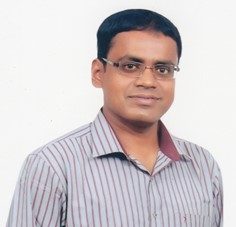
Dr. Subrata Kundu received his Ph.D from the Indian Institute of Technology (IIT), Kharagpur, India in early 2005. Then he moved to University of Nebraska, Lincoln, USA and later to Texas A &M University, College station, Texas, USA as a post-doc fellow (from 2005 to 2010). He is currently working as a Principal Scientist at CSIR-CECRI, Karaikudi, India. Dr. Kundu recently received prestigious FRSC (Fellow of Royal Society of Chemistry) from London in 2023. Dr. Kundu is serving as an associate editor of prestigious ‘Journal of Materials Chemistry A’ and ‘Materials Advances’ from RSC publishers since 2022 and ‘Scientific Reports’ from ‘Nature group publishers’ since 2015. Dr. Kundu and his co-workers are working in the forefront area of Material Sciences with emphasizes on energy, environment, catalysis and electrocatalysis fields. |
What do you think of Journal of Materials Chemistry A as a place to publish impactful materials chemistry research?
I think Journal of Materials Chemistry A (JMC A) is a great place to publish impactful materials chemistry research. The journal has a strong editorial board and a rigorous peer-review process, which ensures that only high-quality research can be published.
Could you provide a brief summary of your most recent Journal of Materials Chemistry A publication?
In our last work, Ni3S4-functionalized 2D CoFe-LDH heterostructure nanosheet was designed for oxygen evolution reaction (OER) in a wide pH range. The negatively polarized sulfide ions and improved magnetic ordering in active cobalt sites of the heterostructure enhanced the deprotonation of OH* intermediate and O2 desorption, respectively. As a result, the Ni3S4@CoFe-LDH heterostructure showed excellent OER performance with a low overpotential of 262 mV and a high specific turnover frequency (TOF) value of 4.93 s−1 (J. Mater. Chem. A, 2023, 11, 16349-16362).
Professor Kasper Moth-Poulsen

Professor Kasper Moth-Poulsen is a research leader in the field of nano-chemistry, energy storage materials and synthetic chemistry. His research activities focus on the development of new solar energy storage technologies. He studied organic chemistry at the University of Copenhagen where he obtained the Cand. Scient. (2003) and Ph.D. (2007). In 2009, he continued his career abroad as a postdoctoral associate at the College of Chemistry at U.C. Berkeley, where he worked with professors Rachel Segalman and Peter Vollhardt. In 2011 Kasper was recruited to Chalmers University of Technology, as an assistant professor. In 2014 he was promoted to associate professor in 2017 to professor and in 2019 full professor. Since October 2021 Kasper has been awarded a professor position at the Catalan Institute of Advanced Studies (ICREA) and joins the Institute of Materials Science of Barcelona (ICMAB-CSIC) as an ICREA research professor. In January 2023 he joined the Department of Chemical Engineering at the Polytechnic University of Catalunya (UPC). Kasper is an Associate Editor of Journal of Materials Chemistry C, and Materials Advances. He is active in several start-ups and spin-out companies from his research group, including Con-Science AB, and NanoScientifica Scandinavica AB.
|
What do you like most about being on the Editorial Board for Journal of Materials Chemistry C?
I am really enjoying contributing to all parts of the global scientific project from research to publishing. The Assoc. editor role give me the opportunity to contribute to the dissemination part. What I really enjoy when I get to handle a new paper is to try to solve the puzzle of identifying the best possible match of reviewers to the new piece of science.
As an Associate Editor, do you have any top tips for authors preparing their manuscript?
The essential thing is of course that you have a story to tell about an exciting piece of materials science. Think about all elements of the manuscript, how the introduction and figures complement this story in the best possible way.
Thank you to all of our dedicated Editorial Board members for their support of the Journal of Materials Chemistry family of journals over the years.
We hope you enjoyed finding out more about some of our Editorial Board members. Keep an eye out for our next ‘Community Spotlight’!
If you missed any of our previous ‘Community Spotlight’ blog posts, check them all out here.
Comments Off on Journal of Materials Chemistry A, B and C 10th Anniversary Community Spotlight: Editorial Board


